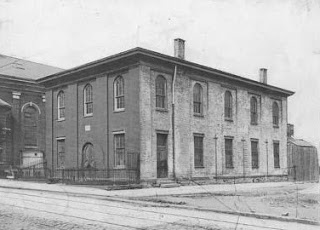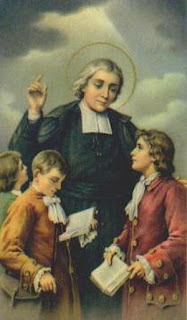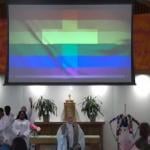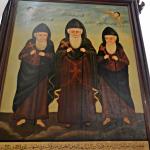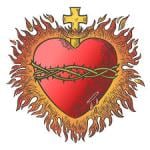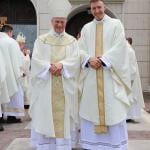St. James Academy, Brooklyn, as seen in the early 1900’s.
Catholic education in Brooklyn (and Long Island) dates back to September 1823, when a layman named Mehaney gathered students in the basement of St. James Church. Nearly thirty years later, the church’s pastor asked the Christian Brothers in Manhattan to send teachers for the boys. (The girls were taught separately, first by the Sisters of Charity and later by the Sisters of St. Joseph.) In early 1852, Brother Albien (1817-1888) and a group of Brothers took the Fulton Street Ferry in Manhattan to Brooklyn.
Brother Albien, F.S.C. (1817-1888)
Born Grégoire Cordier in France, Brother Albien was with the first group of Christian Brothers sent to New York in 1848. He was the Brother Principal of St. James. The community’s historian describes him “a diamond in the rough,” whose rough manner concealed “a heart of gold.” The pastor, it is added, was like Brother Albien “in brusqueness,” and soon “a dash of Gallic and Celtic temperaments ensued.” Brother Albien was transferred to St. Louis the following year.
Until 1883, St. James functioned solely as a parochial school. Then a high school department was created for the boys, while the Sisters ran a girls’ academy. Their students were known as “the boys of Jay Street.” In 1933, the academy was closed and the Brothers were transferred to Bishop Loughlin Memorial High School in Brooklyn’s Fort Greene section, where they remain today. But, the community history adds,
Among the Brothers, the names and memory still linger of the capable and experienced Brother Chronian (Joseph Walsh, 1827-1893), of the cultured and urbane Brother Fabrician (Felix Pellerin, 1843-1926), and of the militant Brother Justinian (Matthew Walsh, 1821-1888), who, to silence criticism of Catholic education, stirred up a considerable bit of controversy by hurling a challenge to the public schools— which they failed to accept— to participate in a public examination and competition with the boys of St. James.Among other revered names, mention should be made of the scholarly Brother Tatian (Ennies Farran, 1834-1899), of the eccentric and energetic Brother Alician Joseph (Thomas Daly, 1854-1928), of the fiery and volatile Brother John Evangelist (Martin Walsh, 1844-1915), of the towering and blustery Brother Castoris of Jesus (Michael Walsh, 1853-1924). These and their successors in office as Director—the imperturbably dignified Brother Anselm Emilus (James Moore, 1863-1946), the genial and kindly Brother Conald Joseph (Francis Welsh, 1863-1944), the stern and aloof Brother Adalrick Vincent (Bartholomew Moynahan, 1866-1924), the fun-loving Brother Austin Julian (John Byrne, 1882-1940), Brother Alban Raymond, and the last of the “Jamesonian Dynasty,” Brother Anthony of Mary— all contributed of their diverse personalities and varied talents toward forming the spirit of loyalty and devotion so predominant among the student body and alumni.
St. John Baptist De La Salle (1651-1719)
NOTE
Officially titled the Brothers of the Christian Schools (Fratres Scholarum Christianarum in Latin), better known as the De La Salle Christian Brothers, are the largest and oldest order of Brothers devoted exclusively to education. They were founded in 1680 by St. John Baptist De La Salle (1651-1719), a wealthy French priest, to teach poor children who couldn’t afford an education. What they did should not be underestimated. They created a unique form of religious life and revolutionized education by developing teaching into an actual profession.
Predominantly a French community, in 1837, the Brothers established their first North American foundation in Montreal. Eight years later, they opened Calvert Hall College High School in Baltimore. Within forty years they ran over a hundred schools nationwide. They came to New York City in 1848, and in 1853 they founded Manhattan College. La Salle was canonized in 1900, and in 1950 was named “Special Patron of All Teachers of Youth.”
While their numbers have declined, their mission continues unabated through the work of laypeople formed by the charism. One of their most successful endeavors is the San Miguel School for inner-city youth. (They’re named for St. Miguel Febres Cordero, a prominent nineteenth century Brother from Ecuador.) Begun in Chicago in 1995, they are now nationwide.
The De La Salles are not to be confused with the Congregation of Christian Brothers, founded in 1802 by Blessed Edmund Ignatius Rice. Popularly known as the Irish Christian Brothers, they came to the United States in 1906. Their schools include Rice High School in Manhattan and Iona College in New Rochelle, New York.

